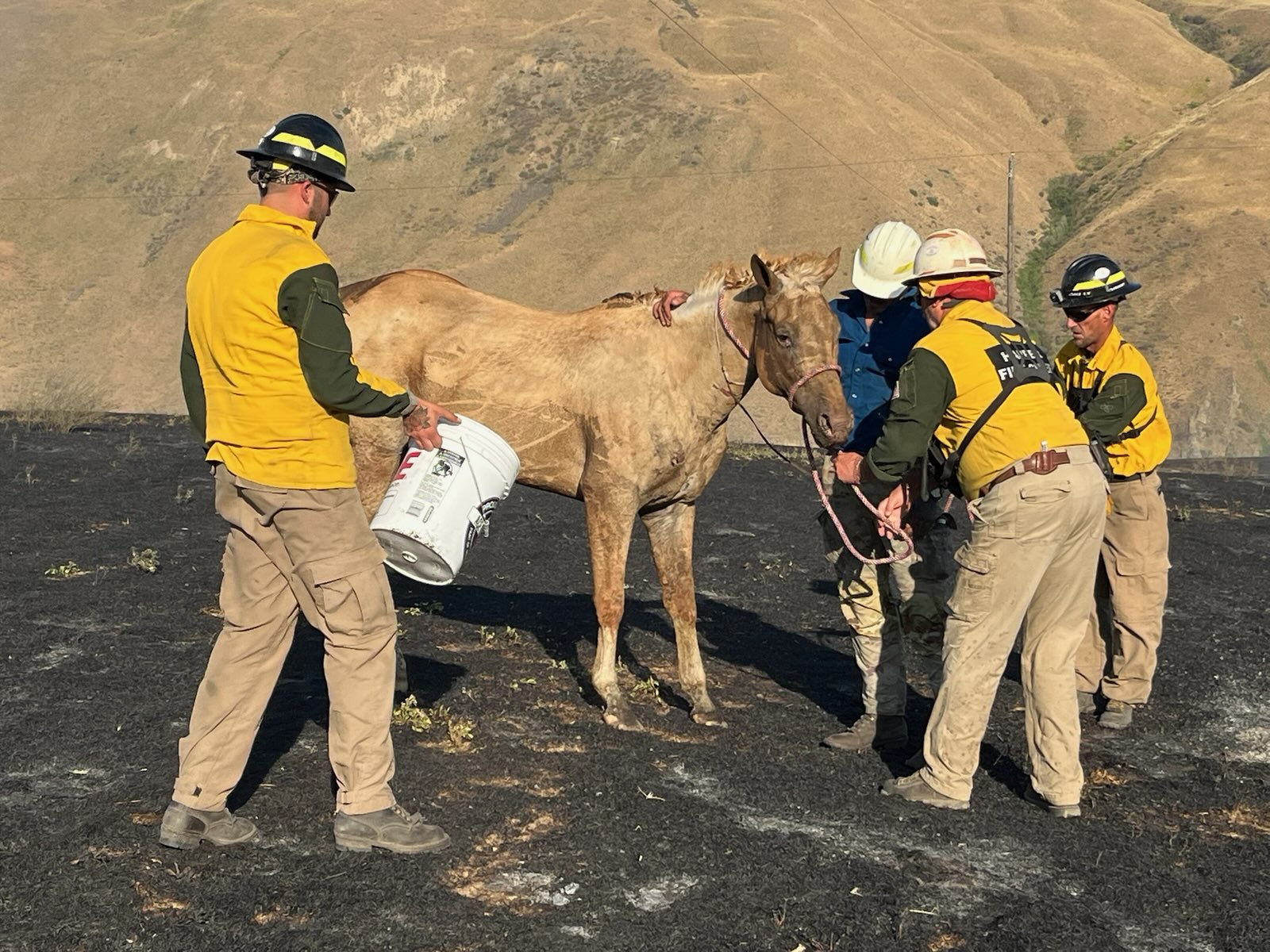COLUMN: Feeling the weight of time out in the woods
Published 12:00 am Saturday, November 28, 2020
The roll of toilet paper looked as out of place as a bull elk in a library.
Trending
Perhaps that’s a slight exaggeration, albeit an improvement, I contend, over the terribly overused bull-in-a-china-shop cliché.
I’ve never actually seen an elk in a library, for one thing.
Or any other hoofed animal, come to that.
Trending
Also, the toilet paper, if you ignored the general setting, was situated in the fashion to which we are accustomed. It was threaded onto a cylinder that made dispensing simple. The roll was within arm’s reach of a hole framed by a white plastic seat.
Which sounds like your basic toilet set up, to be sure.
(And like mine.)
Except your basic toilet set up, I feel confident in saying, isn’t in a grove of lodgepole pines.
Or any other pines.
When I first saw the roll of toilet paper I stopped as suddenly as if I had seen a snake.
The scene was so incongruous, in the manner of some pieces of modern art that juxtapose common but utterly unrelated objects, that for a few seconds I wondered whether my eyes, or rather my brain, had misled me.
But as I walked a few steps closer the apparent inconsistency of this tableau, as often happens with proximity, resolved.
The toilet paper was merely the obvious — arguably the most vital — accessory to a rudimentary outhouse. I berated myself for not recognizing the structure immediately, something that required a simple inference. I had just a few minutes earlier hiked past a hunting camp. And hunters, who obviously can’t suppress their natural, well, functions for several days while they’re pursuing deer or elk, tend to confine that activity to one specific spot.
I just hadn’t expected that the facilities, if you’ll permit me a brief dalliance with euphemism, would be quite so distant from the fire ring and the flat ground where the tents go up.
I surmised that the hunters had perhaps discovered an unpleasant aspect of the local wind currents that prompted a relocation to a somewhat more remote place.
This scheme had one obvious flaw — lack of protection for the toilet paper.
The roll was left bare, so to speak, and as anyone familiar with this particular product knows, its absorbency was designed for volumes rather less than what a mountain rainstorm musters.
This camp is near Hoodoo Creek, between the upper Grande Ronde River and the La Grande Watershed.
We came across it, by happenstance in late September, while hiking on an old road that didn’t look like it had been traveled by a full-size rig in at least a few decades.
I’m no archaeologist but it was clear that hunters have pitched their tents in this glade for generations. The ground between the lodgepoles had the characteristic bare look of places where many people have lain. And the meat poles — if any question remained about the pursuits of those who have camped here, these horizontal logs nailed to trees were unequivocal evidence — had hung so long that some of the nail heads were partially hidden by the bark of the still-growing pines, rusty circles in shallow recesses rather like navels.
These traditional camps fascinate me.
They are historical sites, of a sort, and I feel the weight of the years and the decades when I stand beside the ring of stones blackened by the flames of dozens of fires. It is a pleasant feeling, mainly, tinged with nostalgia. But it’s also a trifle frustrating. I yearn at those moments for something more tangible, a sign that tells me how long the hunters have gathered here. I try to imagine what it would be like to stand here not on a sunny and mild September afternoon but in November, when the dusk comes early and cold, when faces crowd close to the flickering firelight, when the stories of elk are swapped as easily as the whiskey bottle.
— — —
I had a similar feeling a month or so later while hiking the trail that follows the North Fork of the John Day River through its wilderness canyon.
Not far downriver from the mouth of Granite Creek we came across a hoary old ponderosa pine, better than 3 feet through the middle.
Fortunately a trail crew had preceded us and sawed through the mammoth pine. The rings were too close to permit anything like an accurate count, but the tree surely was at least a couple of centuries old.
As we walked through the gap — the trunk so tall it was almost like passing through a tunnel — I thought about how often I have hiked past a cut log on a trail and wondered who wielded the saw, and when.
Was it a fine day, the sun broiling the sweaty sawyers as they went about their heavy work?
Or was a summer storm rising, freshening the breeze and promising the refreshment of a shower at what would normally be the hottest part of the day?
I wonder too about the trail workers, especially in cases when the log has nearly rotted away and must have yielded to the toothed blade many decades before.
Might one of those laborers yet be alive, living his last years?
I conjure in my mind a scenario as I walk along. I imagine a frail man, a widower, alone in the last home he will ever know. I imagine that on occasion, as he’s sifting yet again through the myriad memories that make up his unique story, he remembers that day, that trail, that log. Does he ever wonder, in that moment, whether hikers still pass that log, still benefit from his toil, the task he accomplished with muscles then stout but now withered?
I will never answer those questions.
But it struck me how simple it would be to have trail crews bring along a couple of thin metal tabs. When they saw through a particularly thick tree they could etch their names, and the date, on the tab and nail it to the log.
A small legacy, I suppose.
But even the tiniest tale, a mere handful of words, can enrich those fortunate to read them while wandering the wildlands.
Jayson Jacoby is editor of the Baker City Herald.









